Science
Curricular Goal
A Community of Science Inquirers
Keming Primary adopts an inquiry-based approach to learning science. This investigative approach to learning requires students to investigate a problem, search for possible solutions, make observations, ask questions, test out ideas, and think critically to make a final decision.
Inquiry-based learning allows students to explore, develop explanations for the phenomena under investigation, elaborate on concepts and processes, and evaluate their understanding considering available evidence. Scientific knowledge, scientific inquiry and scientific skills are emphasised in classroom teaching to achieve the 21st CC as desired outcome in our curriculum.
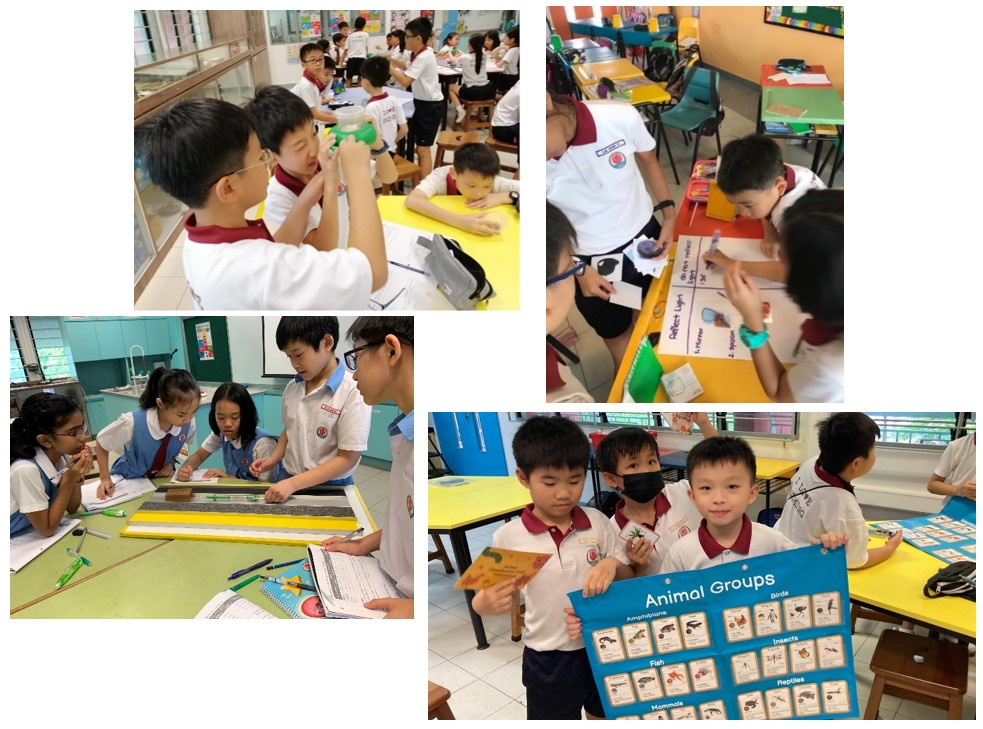
Every Child A Seed
National Environment Agency provides each Primary 3 student with a pot of soil with different type of seeds, mainly roselle, kangkong and sunflower. The students grow these seeds under the guidance of their Science subject teachers. Through this activity, the students learn about the basic needs of plants and how to care for plants. They also observe and study the life cycle of these plants. Students are proud that their seeds manage to germinate and blossom under their care.

Leadership Training for Science Monitors
Primary 4 Science Monitors are trained by Zoo Educators at the River Safari. Thereafter, they are given the opportunity to transfer their learning to others. In the programme, each Primary 4 Science Monitor partners two to three Primary 3 students and explains to them how the organisms in the River Safari survive and how we could take better care of them to prevent extinction. These students practice leadership skills and how to communicate their learning to others.
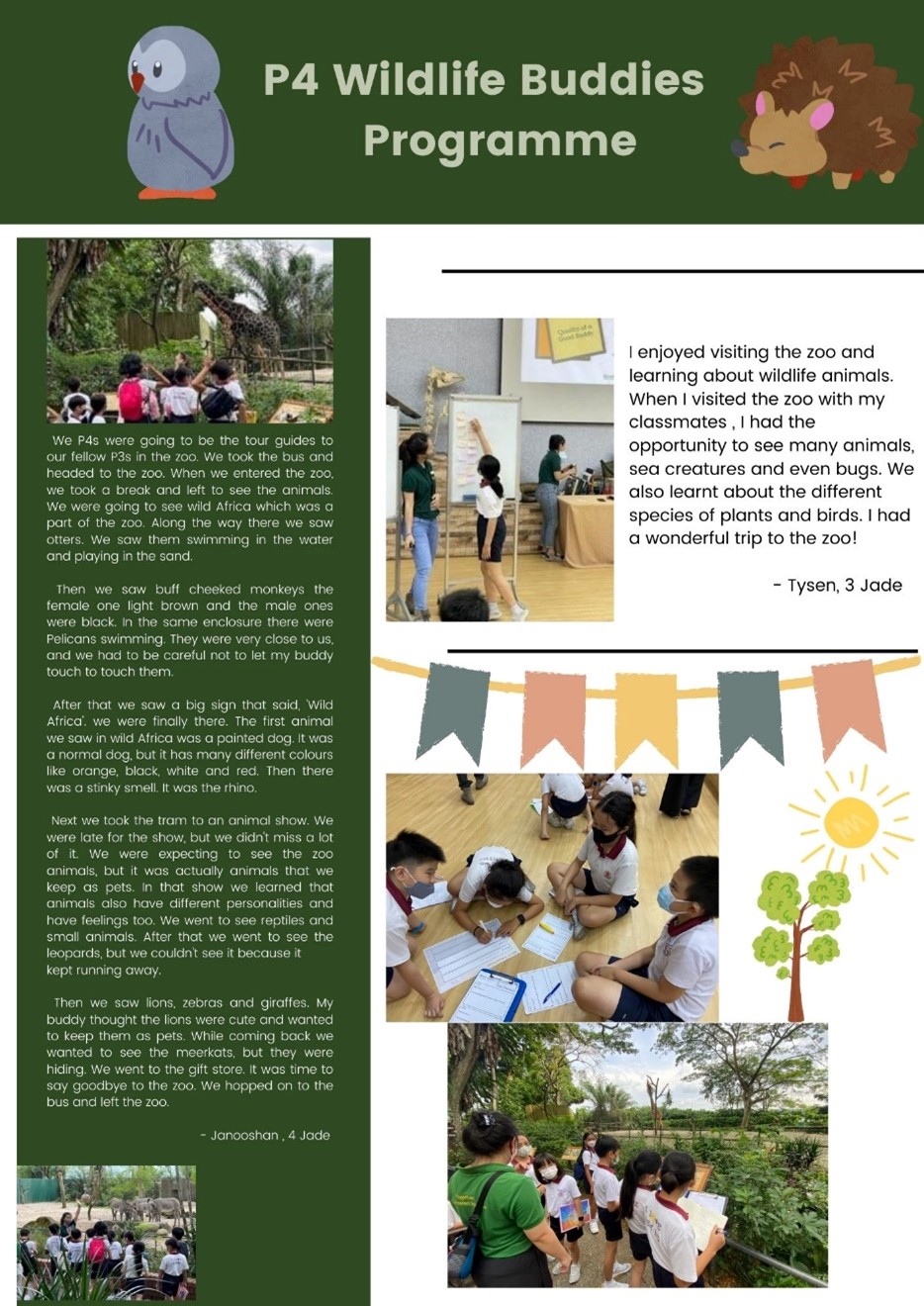
SCIENCE E2K Programme
TThe E2K Science programme exposes students to advanced scientific concepts to develop their process skills and critical thinking in science.
Students will work collaboratively with an assigned task. Students communicate and exchange ideas with each other. The E2K Science programme aims to stimulate curiosity and strengthen their ability to devise a plan and come up with a plausible conclusion. At the end of the programme, we hope to develop Kemingnites as confident speakers, effective communicators and with a mindset of inquiry.
Students working as a team to understand the task activity and collect data and results.
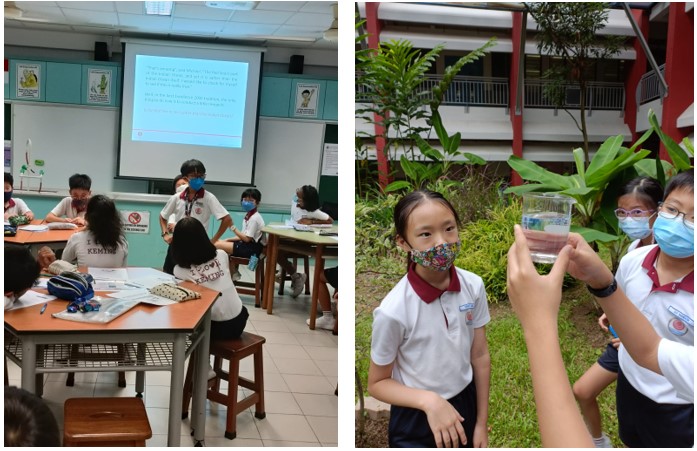
Students working together to devise a plan and carrying out their plan for data collection and analysis.
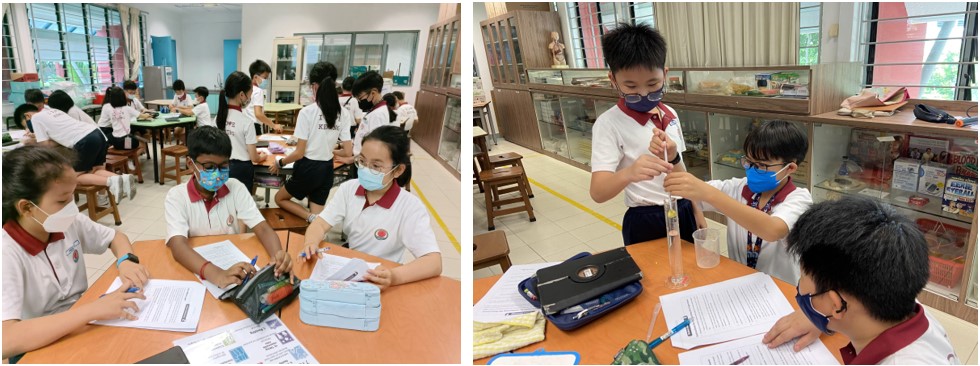
Students shares their plan and results as a team at the end of the activity.


|

|
Garden Trail
The Eco Garden has been created to enable students to have a good experience in understanding the different types of garden plants and how these plants could grow and adapt to live in the ecosystem.
Students learn about the plants and plant parts that are found around the school compound. They follow the trail mapped out on ipads and make use of several apps to make scientific observations about the flora in the garden. Through this engaging activity, students learn the value of harmony as they work in groups to complete the various tasks assigned to them.
Students gain relevant knowledge and skills and make sense of the new experience with their peers.
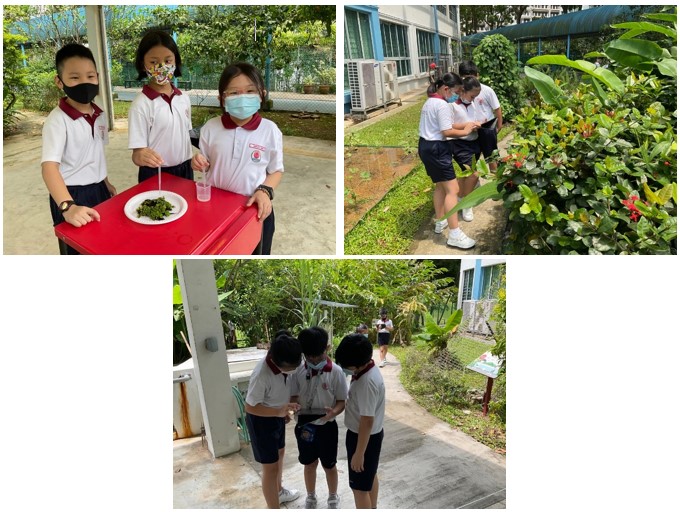
Students walking in the Science Ecogarden to learn about the diversity of living things.
I.G.N.I.T.E. Lessons
(Inspiring Growth N Inquiry Through Exploration)
I.G.N.I.T.E. lessons allow students to put their science concepts learnt into practice. Students get to build and create parachutes, towers and wind-powered cars and through trials and modifications, come up with the best model for their final presentation.
In order to design the best parachute that can stay in the air for the longest time, the Primary 3 students need to find out which type of materials will be best for the canopy and how wind and other factors can affect the time the parachute can stay afloat.

|

|
|---|---|
|
Students making a parachute as a team. |
Students testing out their parachute and finding out which parachute can stay in the air for the longest period of time. |
Primary 4 students take on the challenge of building a solar oven using reusable and recyclable items. They need to know heat can be trapped in their solar oven and how the different materials can affect the solar oven’s ability to warm things up.

Students testing out their solar oven under the sun.

Students working together to build their solar oven.
Primary 5 students create a robotic hand using recycled materials. Students discuss and brainstorm on the purpose of building of robotic hands to meet the needs of the users. They learnt to empathize the user’s needs and show how the robotic hands can help them in their daily lives.

Robotic hand made by students.
Seatrium Limited Greenwave Environmental Care Project 2023


